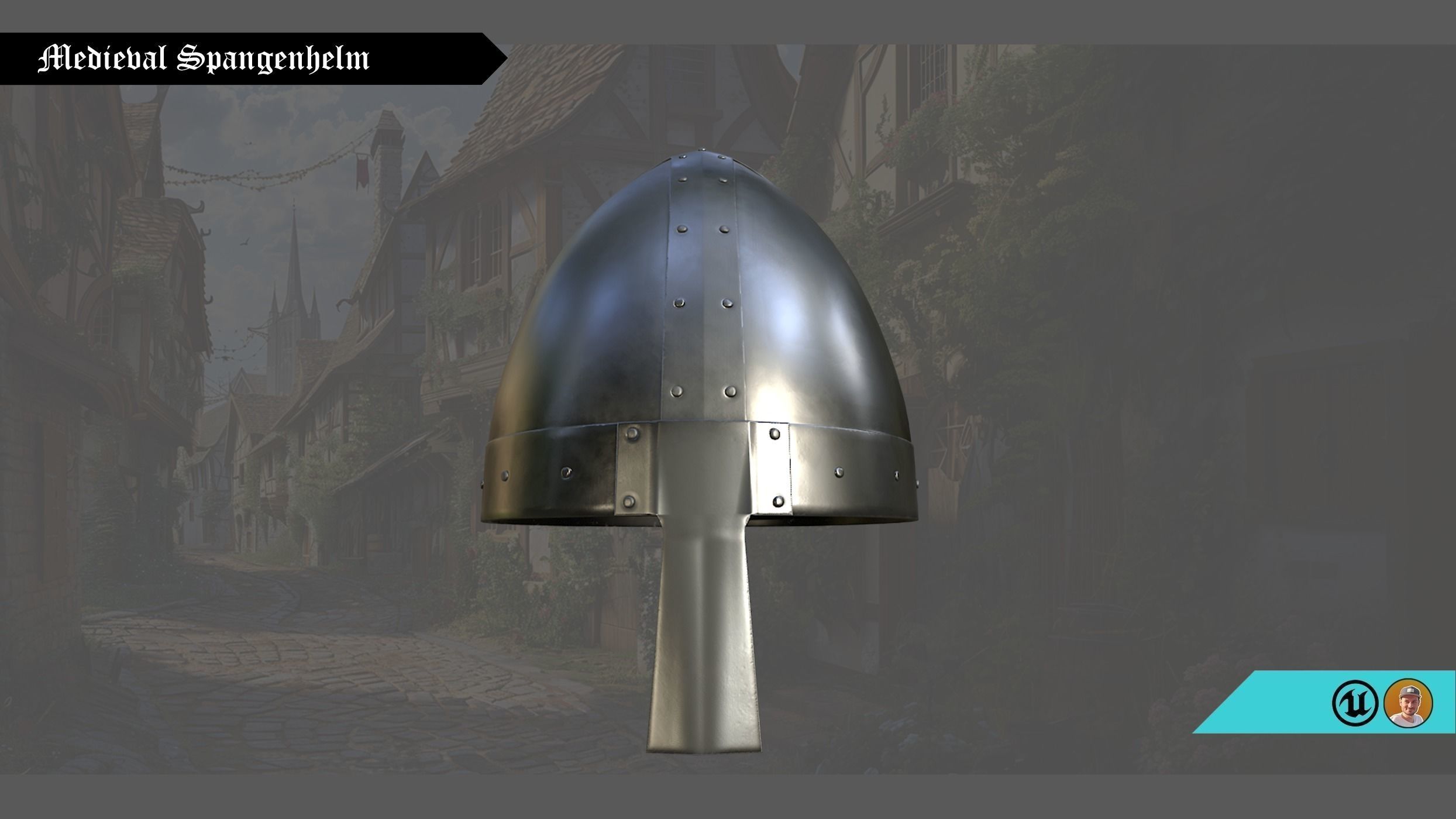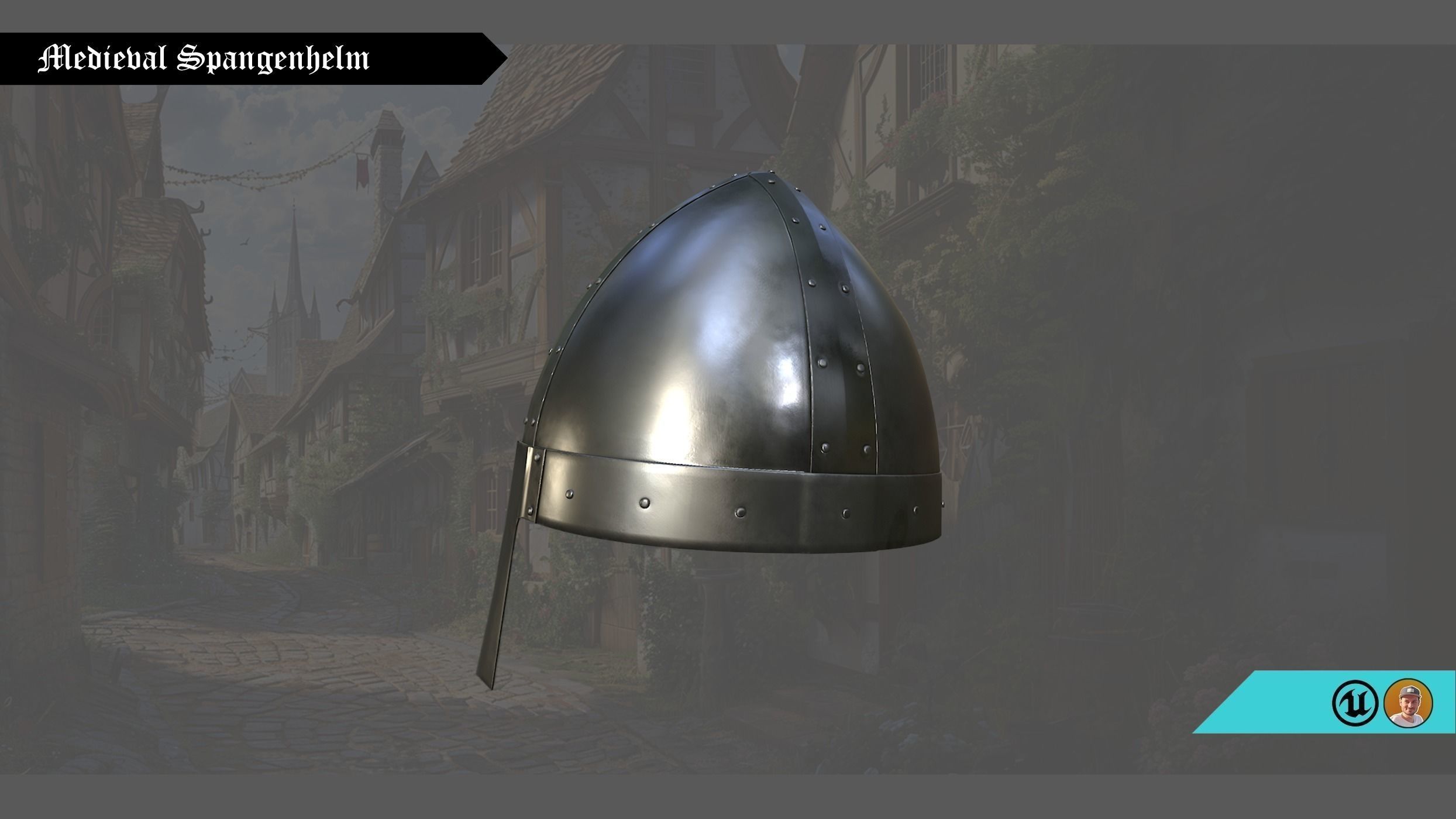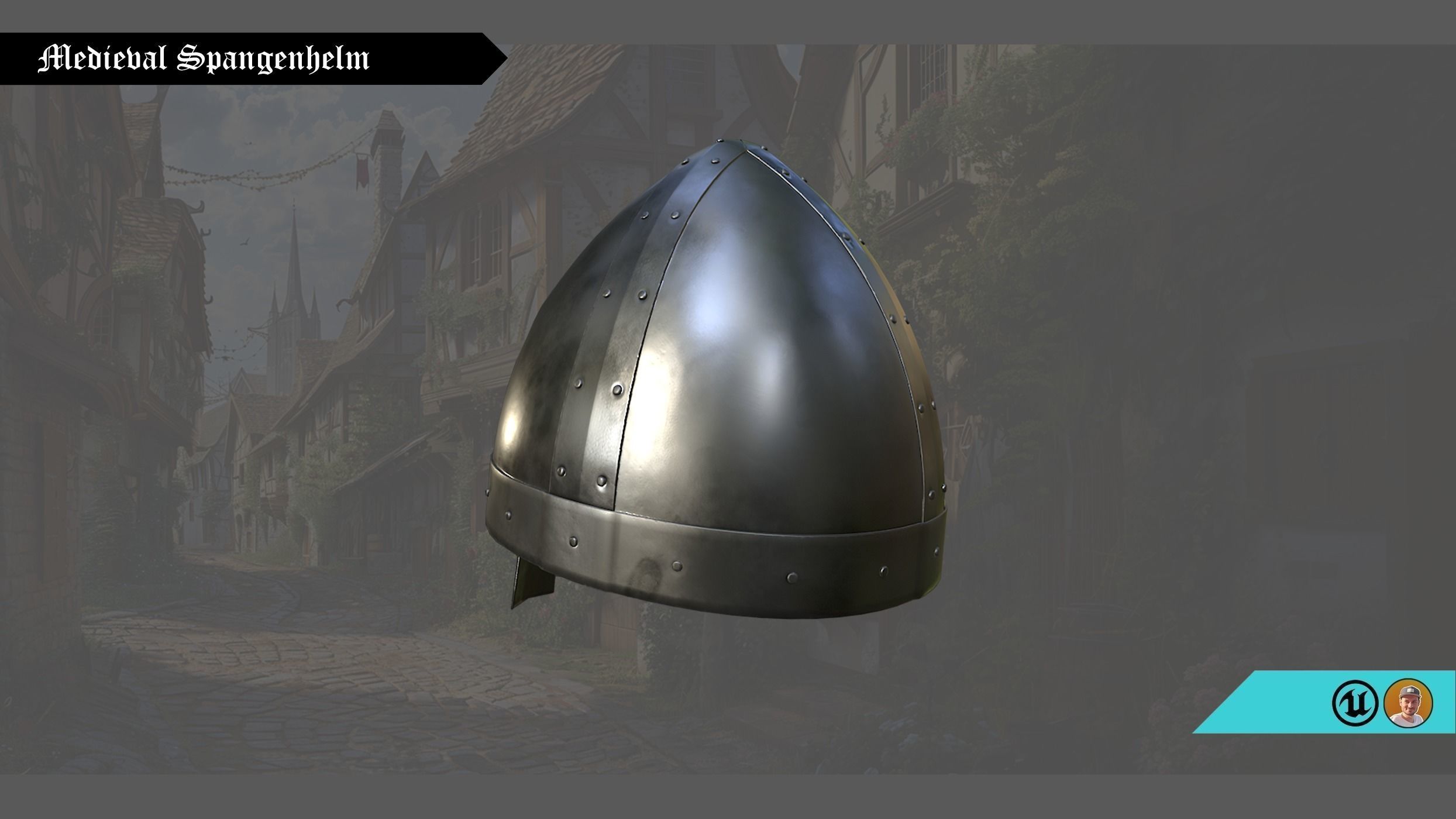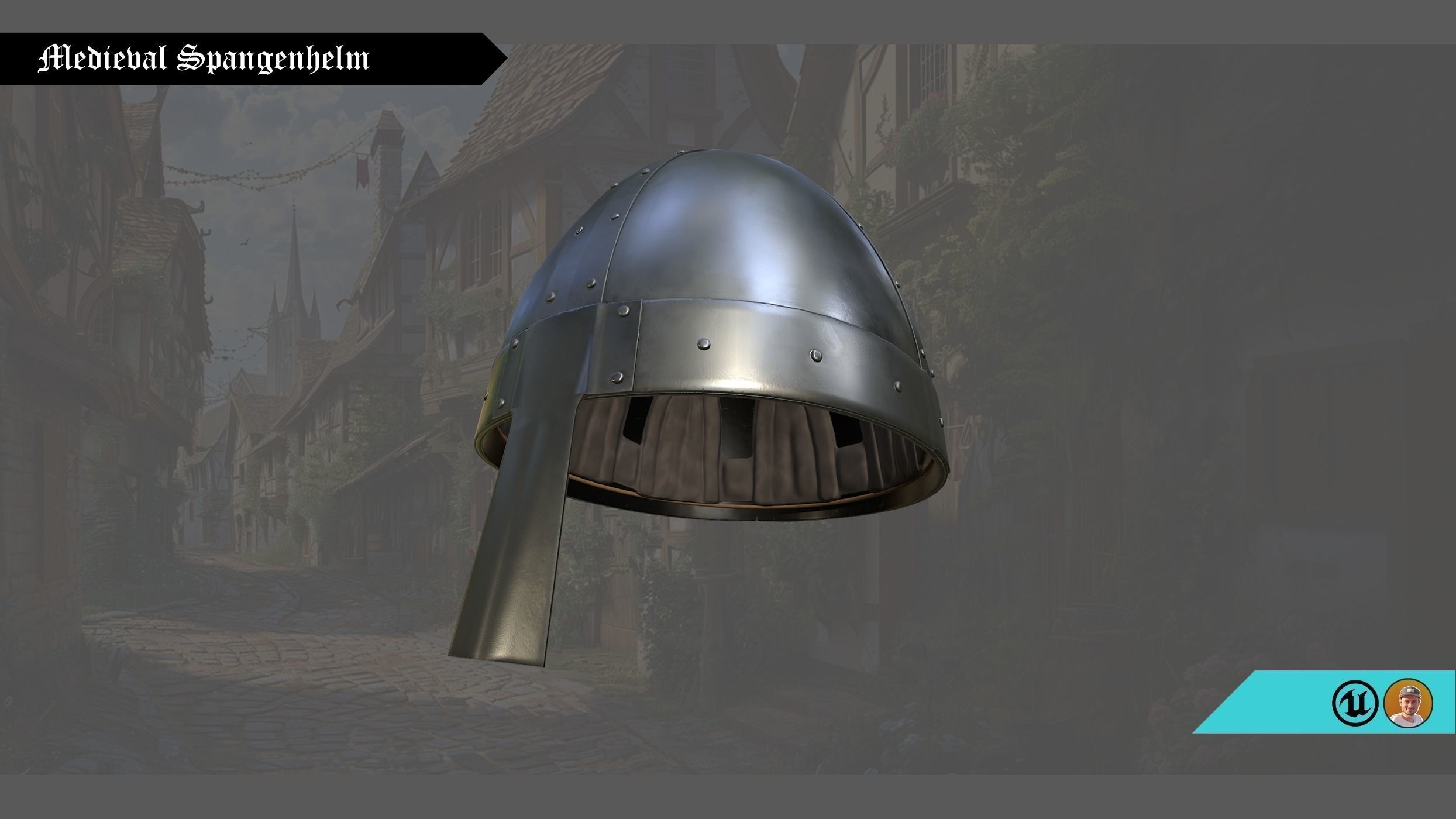
Nordic Spangenhelm - For Metahuman Low-poly 3D model
The medieval spangenhelm, first seen around the 6th century. The spangehelm is an iconic helmet of the Middle Ages, exemplifies both functionality and craftsmanship. Constructed from iron or steel, its design consists of several metal strips or spangen riveted together to form a framework. These spangen provide structural support, while the gaps between them are filled with plates or scales, offering protection to the wearer's head. The helmet typically features a conical or hemispherical shape, with a nasal bar or a T-shaped bar extending downwards to guard the nose or face. Some variations include cheek guards for added defense.
One of the spangenhelm's notable attributes is its versatility. Its design allows for customization to suit various combat needs and preferences. Over time and across regions, modifications were made to adapt to different styles of warfare, resulting in a diverse array of shapes and embellishments. Furthermore, its relatively simple construction made it accessible to a broad spectrum of warriors, from foot soldiers to knights.
Beyond its utilitarian purpose, the spangenhelm often served as a canvas for artistic expression. Elaborate engravings, ornate crests, and decorative elements adorned many helmets, reflecting the status and identity of the wearer. Thus, the spangenhelm stands as a symbol of both practicality and aesthetics, embodying the ingenuity and martial culture of the medieval era.






